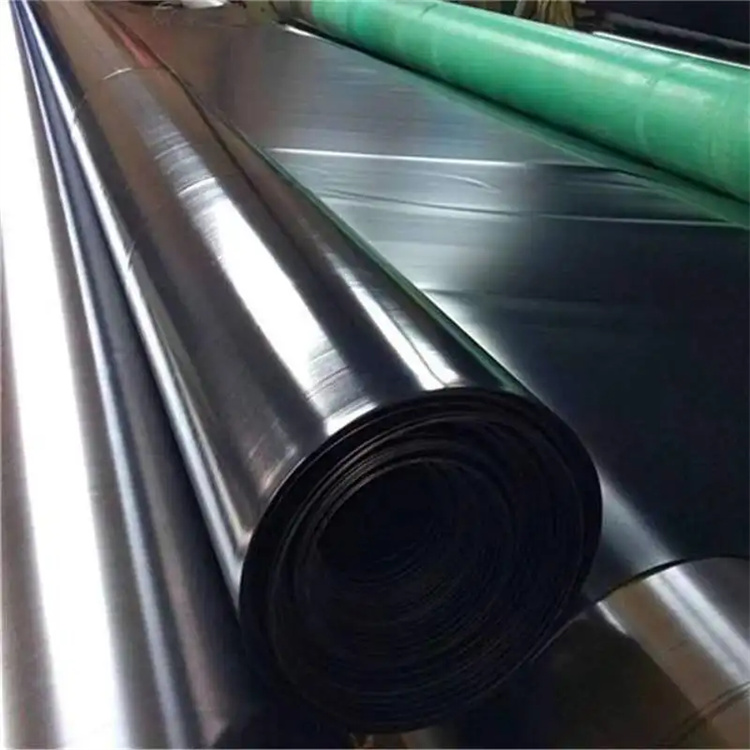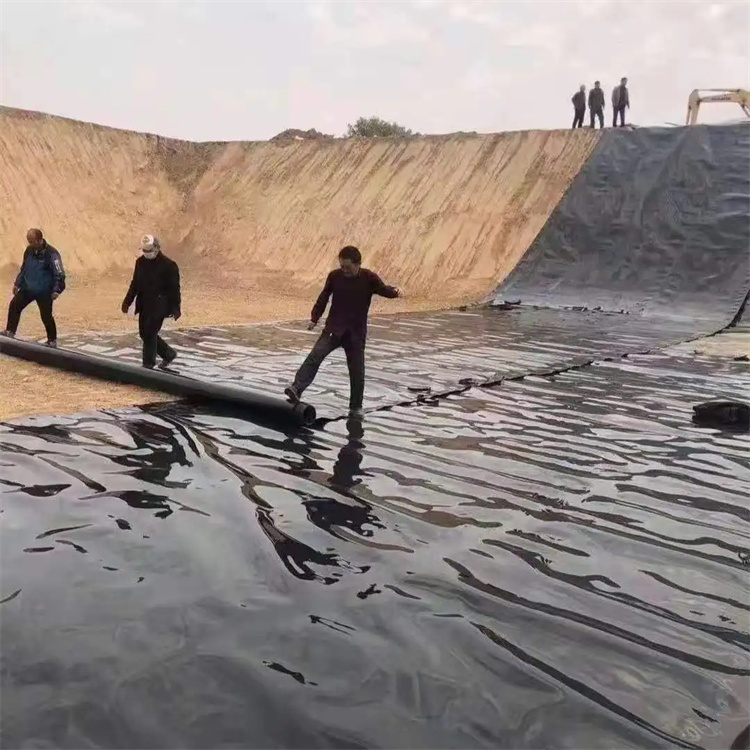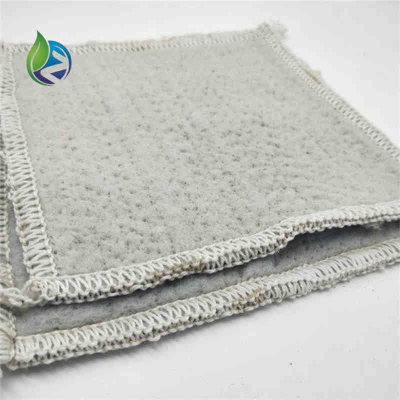Geomembrane Description
Geomembrane is a kind of waterproof barrier material based on high polymer. It is mainly divided into low density polyethylene (LDPE) geomembrane, high density polyethylene (HDPE) geomembrane and EVA geomembrane.
The full name of HDPE geomembrane is "high-density polyethylene film", which has excellent environmental stress cracking resistance, low temperature resistance, anti-aging, corrosion resistance, and a large temperature range (-60--+60) and a long service life (50 years).
LLDPE geomembrane:
The full name of LDPE impervious film is "low density polyethylene impervious film", which has good softness, ductility, transparency, cold resistance and processability. The chemical properties are stable, can resist acid, alkali and general organic solvents below 60 ° C, so it is especially suitable for application in anti-leakage, waterproof, anti-corrosion, moisture-proof and so on.
PVC geomembrane:
PVC geomembrane is a high quality polymer waterproof plate, by adding plasticizer, anti-ultraviolet agent, anti-aging agent, stabilizer and other processing additives in PVC resin, through the extrusion process to produce molding polymer waterproof sheet. It has the characteristics of high tensile strength, excellent elongation, convenient construction, aging resistance, good wear resistance, strong puncture resistance, chemical corrosion resistance, UV radiation resistance, low temperature flexibility and so on.
Application field:
1. Municipal Environmental Protection:
Municipal quite a headache is the disposal of waste, especially liquid waste, which has fluidity and exosmosis, easy to spread, difficult to control and deal with, then you can use geomembrane to solve this problem, the waste pool for geomembrane impervious treatment, liquid waste can not be exosmotic again and is concentrated in the garbage pool, easy to deal with the next step.
2. Aquaculture field:
Geomembrane is widely used in the field of aquaculture. Due to the phenomenon of water seepage in diversion ditches, a considerable part of water is wasted in the process of flowing and cannot reach farmers' fields in agricultural irrigation. At this time, geomemofilm can be used to spread the geomemofilm above the diversion ditches to prevent the exosmosis of irrigation water and improve efficiency and economic performance. In addition, there are cultured fish ponds and lotus pond
3. Petrochemical Industry:
The impermeability, acid resistance, alkali resistance and chemical corrosion resistance of the geomembrane determine its unique application prospects in the field of petrochemical industry. It can be used for the impermeability of chemical wastewater plants and oil refining wastewater ponds to avoid the diffusion and exosmosis of chemical corrosive liquid and petroleum waste liquid, and also for the impermeability of chemical reaction ponds to ensure the smooth completion of chemical reactions in the ponds. It can also be used for the lining of chemical pipelines, and the geomemofilm can be attached to the inside of chemical pipelines after melting, avoiding the corrosion of chemical pipelines.
Construction method:
Geomembrane in the transportation process do not drag, hard pull, to avoid sharp objects stabbing.
1.Should be extended from the bottom to the high, do not pull too tight, should leave a 1.50% margin for local
subsidence and stretching. Considering the actual situation of the project, the slope is laid from top to bottom.
2. The longitudinal joints of the two adjacent pieces should not be on a horizontal line, should be staggered more
than 1m.
3. The longitudinal joint should be more than 1.50m away from the dam foot and bend foot, and should be located
on the plane.
4. The first slope behind the bottom.
5. When the slope is laid, the film direction should be basically parallel to the maximum slope line.







